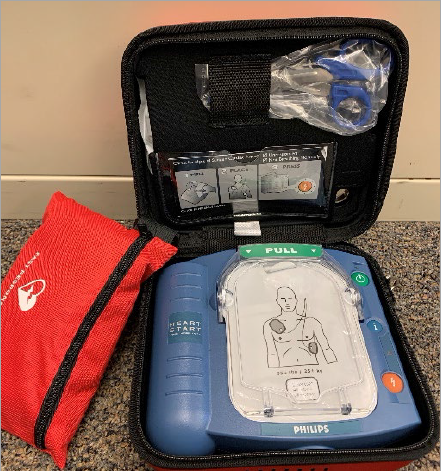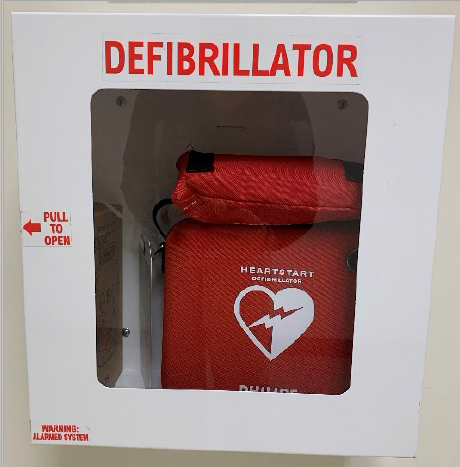What is an AED?
A semi-Automatic External Defibrillator, AED for short, is a small portable device that analyzes the heart rhythm of a person who is in cardiac arrest. It determines if the person is in a rhythm called Ventricular Fibrillation (VF). If the person is in VF, the AED will deliver a series of shocks that, depending on the circumstances, could convert the person's heart rhythm back to the normal rhythm and greatly increase their chance of survival.
AEDs are usually found in public places around the country and are designed to be as simple as possible to use. Anyone can be trained to use this unit. The goal, with the placement of AEDs, is to have the unit applied and a shock delivered within three minutes. This statistic increases the chance that a cardiac arrest victim will walk out of the hospital from ten percent or less to sixty to seventy percent. An ambulance, even in the best system, might take upwards of ten minutes to arrive even if someone immediately calls 911.
Additionally, there is an AED in every police car in the State of Delaware, including the University Police Cars, in every ambulance and on all other pieces of emergency equipment (fire trucks, ambulances, etc.). The goal is that even if a building is not equipped with an AED, one of these other vehicles can get to a person very quickly.
LINKS
 |
 |
| This is an example of an AED unit that is installed around campus, in the University Police Cars and the University Ambulance. |
All AEDs that are installed around campus are mounted in conspicuous locations in a white case. The cases are alarmed. |
For more information, please call Environmental Health & Safety at 831-6366, or e-mail Michelle Ferguson at mlfergus@udel.edu.




